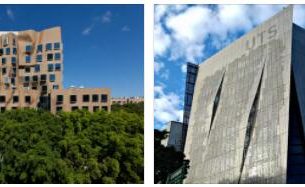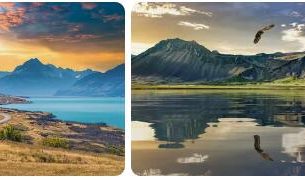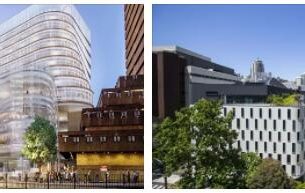The island state of Palau is located in the northwestern Pacific, east of the Philippines and west of Hawaii. It belongs to Micronesia, which means “small islands”. Micronesia also includes the Federated States of Micronesia, Guam, Nauru, the Marshall Islands, Kiribati, the US Pacific Territories, and the Northern Mariana Islands. Palau is the westernmost state of Micronesia and the westernmost of the Caroline Islands.
Palau means “we have”. By the way, the locals call their islands Belau.
Palau is full of exotic nature, both on land and in the sea.
The Palau archipelago is one of the few islands that lives up to our idealized South Sea image. Overall, Palau consists of around 20 larger islands and a large number of smaller ones. The islands can be divided into volcanic islands and coral islands. In total, only nine of the islands are inhabited, with around two thirds of the population living in the former capital Koror. The archipelago stretches over 200 km in length and over 40 km in width. Palau is about 1,600 km from Manila/Philippines and 1,300 km from Guam.
| Name of the country | Republic of Palau |
| Form of government | Palau is an island republic in free association with the USA. The state is organized as a parliamentary-presidential system. |
| Location | In the Pacific Ocean, about 800 km east of the Philippines; at around 7 ° 30 ‘north latitude, 133 ° 30’ east longitude |
| National anthem | Belau loba klisiich he a kelulul |
| Population | Around 22,000 (Credit: Countryaah: Palau Population) |
| Ethnicities | Approx. 70% Palau,28% Asians,
2% Caucasians (whites) |
| Religions | About two thirds are Catholics and Protestants and about one third practice the local fashion kngei religion. |
| Languages | English, Palaui |
| Capital | Melekeok. Melekeok has been the seat of the Palau government since October 7, 2006, replacing Koror as the capital. |
| Surface | 500 km2 including water area |
| Highest mountain | Mount Ngerchelchuus, with a height of 242 m |
| Longest river | Ngermeskang River |
| Largest lake in area | Lake Ngardok, with 493 hectares and thus the largest freshwater lake in Micronesia |
| International license plate | PAL |
| Currency | U.S. dollar |
| Time difference to CET | + 8 h |
| International phone code | + 680 |
| Mains voltage, frequency | 115/230 volts, 50 hertz |
| Internet TLD (Top Level Domain) | .pw |
Palau: history
Founding myth
A woman on Palau gave birth to a son named Uab, who grew up so quickly and became so hungry that the islanders were mostly busy feeding him. But the more they fed him, the more he asked, and the faster he grew. This went on until it was bigger than a coconut palm and the food on all the islands was used up.
According to Abbreviationfinder website, the islanders reluctantly decided that the boy would have to be killed so that the rest of them could survive. So one evening they set the men’s house in which the boy slept on fire. The boy’s body puffed up and eventually exploded. His body parts flew in all directions.
The island of Kayangel was created from his head, the islands of Babeldaob from his torso, Peleliu from his legs, Angaur from his feet and the Little Rocks Islands from his fingers and toes.
The islanders began to colonize the new islands, believing that after feeding the boy for a while, he would now feed them.
History
The islands have been demonstrable since approx. 1,000 BC. Populated Chr.
Society was structured matrilinearly, that is, along the lines of the mother. For example, property was passed on by women. However, this was then shared by the extended family.
The Europeans are coming
The first European to set foot on the islands was the Spaniard Ruy Lopez de Villalobos (1500-1545) in 1543.
More than a hundred years later, in 1686, the Spaniards claimed the islands as their territory, but they never actually took possession from the islands.
The English captain Henry Wilson came to the islands in 1783 with an almost unseaworthy ship. He was warmly received by the locals. They even helped the ship’s crew repair the ship. When it left for England, the chief’s son Lebuu was on board to enjoy a school education in England. The Palau people gave him gifts that can be seen today in the British Museum.
The British soon came to the islands as traders and brought weapons with them, which, like on other islands, were used by the locals in violent disputes among themselves.
Around 1900
The Spanish then took over the islands in 1885. With them came the Jesuits to the islands, who spread Christianity and the alphabet. The Spanish later sold the islands to the Germans, who took over Palau in 1899. At that time the population had sunk from around 40,000 to around 4,000, not least due to the armed conflicts between the individual tribes and the diseases brought in by the Europeans.
Palau was a German colony from 1899 to 1914.
After the Germans had sold the islands to the Japanese, they took over the islands in 1914. From Koror, they managed all of their branches in the Pacific. At the end of the 1920s, the Japanese turned the city into a real fort and sealed it off from the rest of the world.
World War II and after
In 1944 the Americans bombed the island. Violent clashes took place in Peleliu and on Angaur Island. The victorious Americans were the new occupying power after World War II. The attempt to make the island like the neighboring states of Micronesia into an extra-territorial American overseas territory failed. In a 1978 vote, Palau split off from the Federated States of Micronesia. In 1980 its own constitution came into force and Koror became the capital of the new state.
For a long time, Palau saw itself as a nuclear-free zone, much to the annoyance of the United States. In 1993, the Palau people even received the alternative Nobel Prize for their use against nuclear weapons.
It was not until October 1, 1994 that Palau became an independent state.
The Americans, however, bought the right to military access to the islands and the right to store nuclear weapons with a treaty of free association. The money was used to finance the construction of Palau’s new capital, Melekeok. On October 7, 2006, Melekeok became the seat of government, replacing Koror as the capital.



